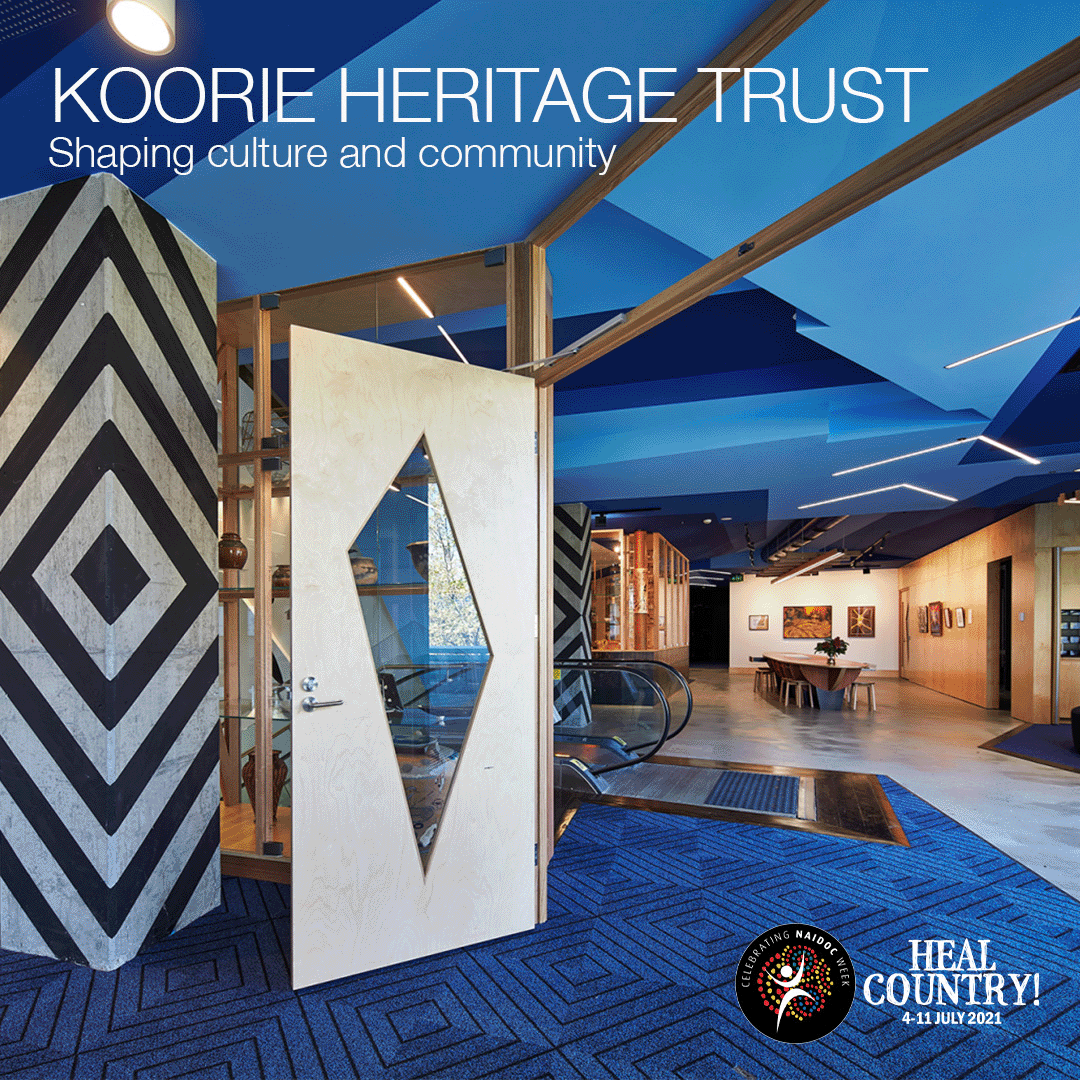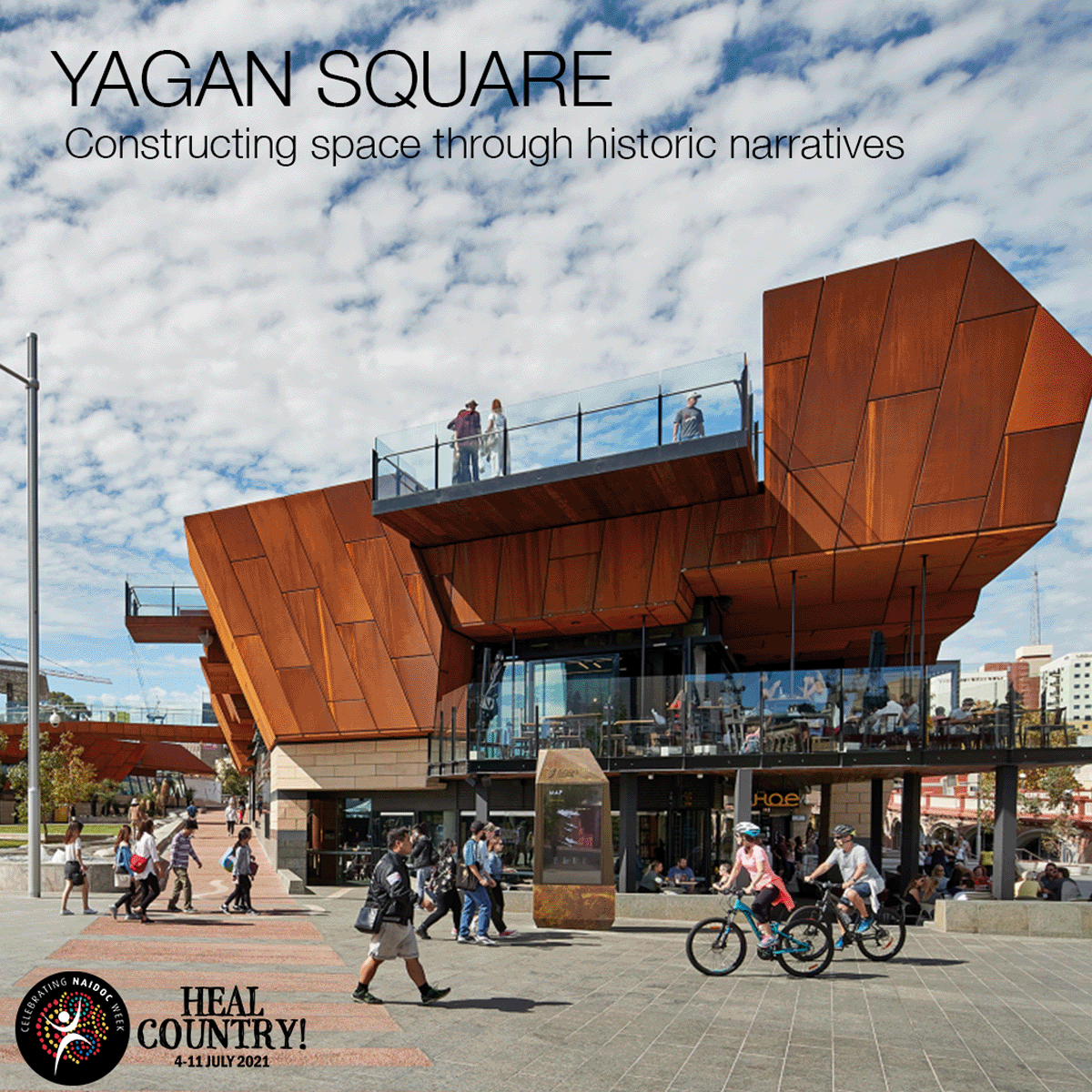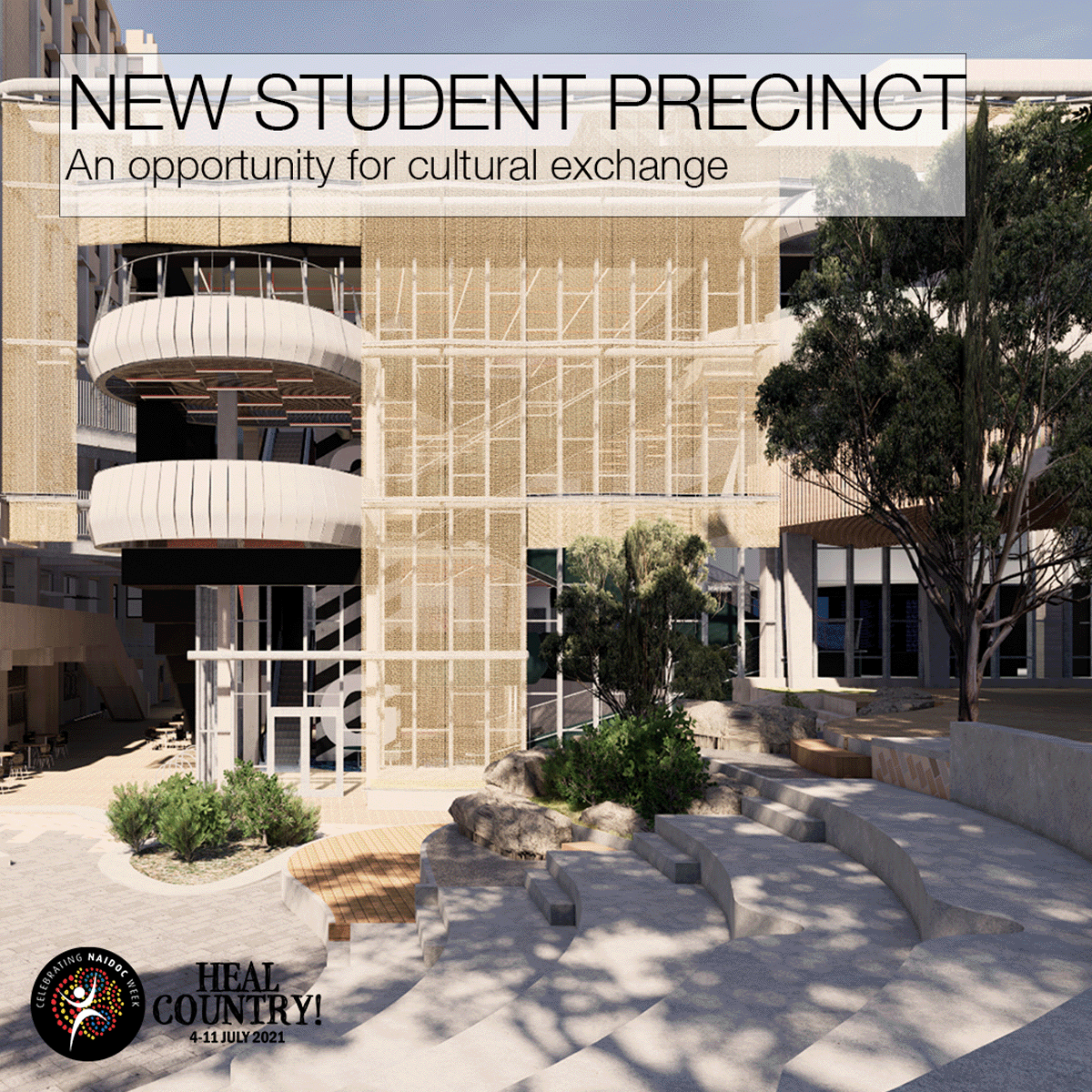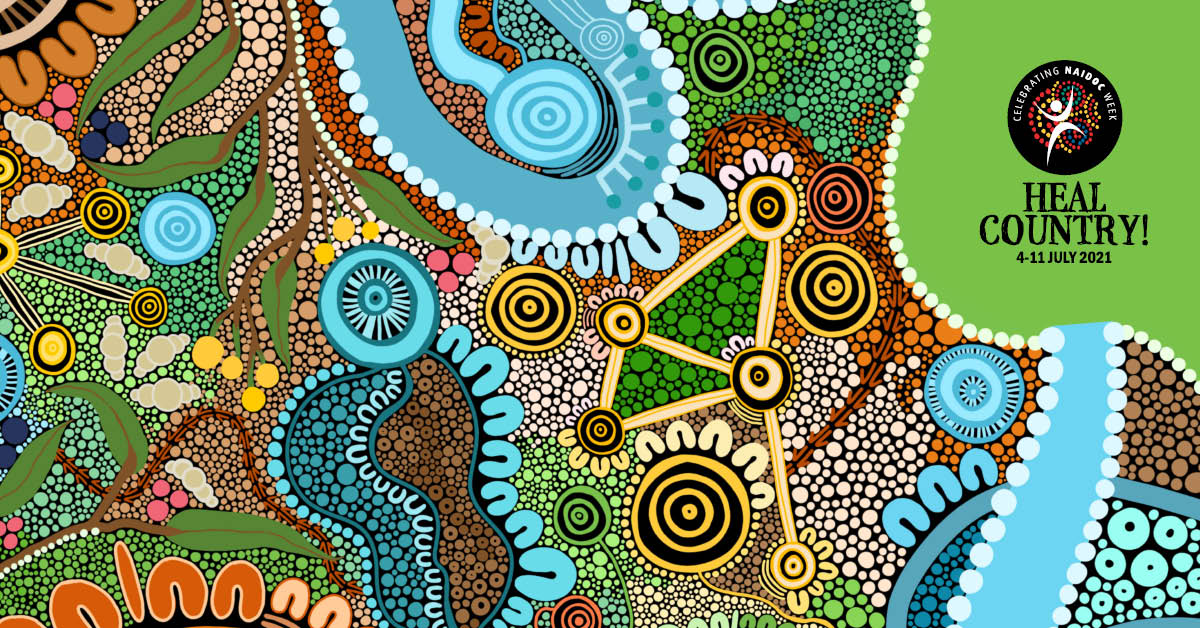NAIDOC Week 2021
NAIDOC Week 2021
This NAIDOC 2021 theme – #HealCountry – calls for all of us to continue to seek greater protections for Indigenous lands, waters, sacred sites and cultural heritage from exploitation, desecration, and destruction.
At Lyons we are conscious of the need to marry stories with buildings to create a strong sense of place. We are marking this NAIDOC Week by acknowledging key projects and industry partners with Indigenous connections as an opportunity to better recognise the history and culture of Aboriginal and Torres Strait Islander people.
We invite you to join us this NAIDOC Week in celebrating First Nations enduring knowledge, culture, and wisdom.
About NAIDOC Week
NAIDOC Week celebrations are held across Australia each July to celebrate the history, culture and achievements of Aboriginal and Torres Strait Islander peoples. NAIDOC is celebrated not only in Indigenous communities, but by Australians from all walks of life. The week is a great opportunity to participate in a range of activities and to support your local Aboriginal and Torres Strait Islander community.
NAIDOC originally stood for ‘National Aborigines and Islanders Day Observance Committee’. This committee was once responsible for organising national activities during NAIDOC Week and its acronym has since become the name of the week itself. Find out more about the origins and history of NAIDOC Week.
Each year, there is a different focus city for the National NAIDOC Awards Ceremony. The focus city, National NAIDOC Poster Competition and the NAIDOC Awards recipients are selected by the National NAIDOC Committee.
Local community celebrations during NAIDOC Week are encouraged and often organised by communities, government agencies, local councils, schools and workplaces. Wherever you live, you can take part in NAIDOC Week celebrations. To find out about NAIDOC Week activities in your area, contact your nearest Regional Office.
The 2021 National NAIDOC Poster, ‘Care for Country’ was designed by Gubbi Gubbi artist Maggie-Jean Douglas.
Koorie Heritage Trust
When it comes to representing Indigenous culture through the built environment, architecture and design play an important role. This project saw the relocation of the Koorie Heritage Trust from its former King Street premises into the refurbished Yarra Building at Fed Square. The relocation held deep symbolism, hence our methodologies required thoughtful collaboration to connect our design thinking to Indigenous perspectives. The result is a space designed through the lens of dialogue, placing Indigenous culture both literally and figuratively in the heart of Melbourne.
The project became an opportunity for cultural exchange and meaningful engagement with the Trust’s community. Through space, colour and materials we designed the space to invite both Koorie and non-Koorie people to enrich themselves in a cultural experience. At the top of the escalators, a graphic of the Manna Gum flower leads to the metaphorical front door and represents the abstraction of a smoking ceremony. From the top of the stairs, light floods from windows to draw people back to the lifeblood of the city – Birrarung (the Wurundjeri name for Melbourne’s Yarra River).
The Trust’s significant, symbolic move from the margins of the city to its centre creates a place for Koorie living culture and the Koorie community to be celebrated and come together in the spirit of reconciliation.
Located on the traditional lands of the Wurundjeri people.
Yagan Square
Creating a sense of place in an urban environment requires the convergence of stories and carefully designed buildings. Yagan Square is a civic space formed from stories of the site’s past with a strong Aboriginal narrative. Located in the heart of Perth’s CBD, Yagan Square is one of Perth’s most popular community, meeting and celebration places.
The site sits on the land of the Whadjuk people – the traditional owners of the land – and was traditionally an important meeting place for Indigenous people, particularly women who gathered food from lakes that were once in the area. The name reflects this importance, paying homage to a Noongar warrior, Yagan.
Conscious of the historical weight Yagan Square holds, our response is both a literal convergence in the heart of the city, and a symbolic coming together of geologies, tracks, narratives, Indigenous and non-Indigenous people and culture. We relied heavily on collaboration to ensure Indigenous history was woven throughout the design and the result is a space organically embedded with meaning and history, providing a place of significance that welcomes Indigenous and non-Indigenous people alike.
Located on the traditional lands of the Wadjuk Noongar People.
New Student Precinct
The New Student Precinct (NSP) at the University of Melbourne unveils rich cultural histories and shapes diverse new interactions. Currently in construction, the project is set to transform the student experience at the University of Melbourne while deeply rooting it in its cultural past.
Crucial to a design that acknowledges and includes all people is the consideration of Indigenous engagement. As a signature project for the University’s Reconciliation Action Plan, there is deep commitment to ensure that First Nation’s thinking, perspectives and sensibilities are infused into the DNA of the project. The new home for Murrup Barak recognises a University-wide Indigenous engagement process that aims to ensure genuine respect and best practice for reconciliation. The new centre includes four key spaces identified through Indigenous-led consultation; a Cultural Exchange Space, an Indigenous-Led Space, a Culturally Safe Space and a Caring for Country Space.
Some examples of the carefully conceived cultural narratives include an eel and frog pond to encourage native flora and fauna to flourish, the Billibellary ‘Welcome Ground’ and extended ‘Welcome Terrain’ that flow through the entire precinct with native materials and vegetation, a significant central Tanderrum Space, and a reinstatement of the water story of the original Bouverie Creek. The design and integration of meaningful materiality, naming and programming will support opportunities for students, staff and visitors to connect with the living history of the University’s Indigenous community.
Located on the traditional lands of the Wurundjeri people.
Lyons acknowledge and celebrate Indigenous culture and our shared history. We are committed to promoting reconciliation by working collaboratively with communities to co-create and co-deliver the best places for all our people.





